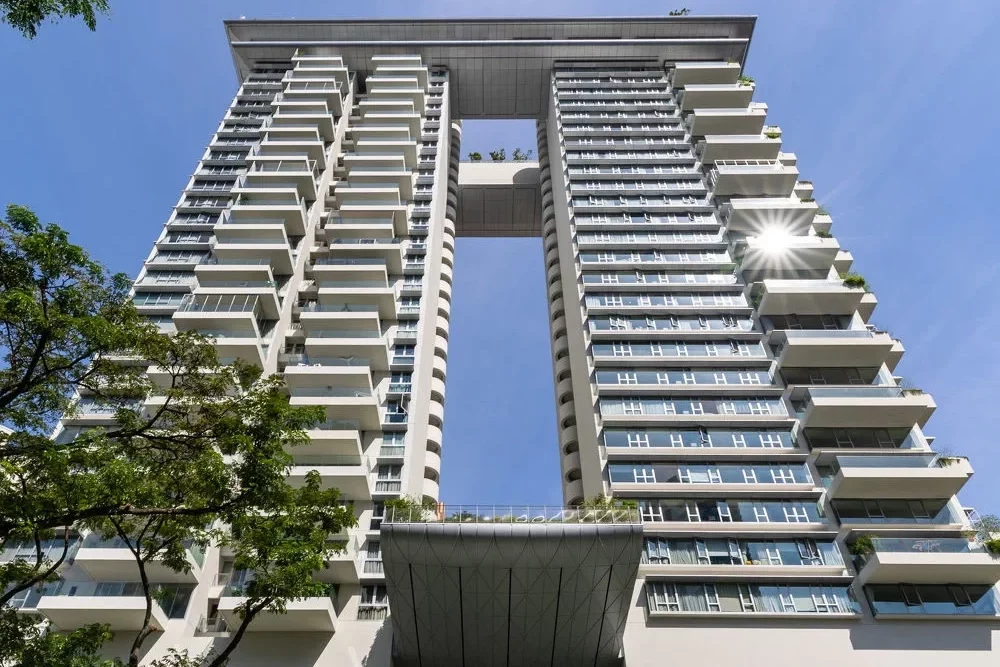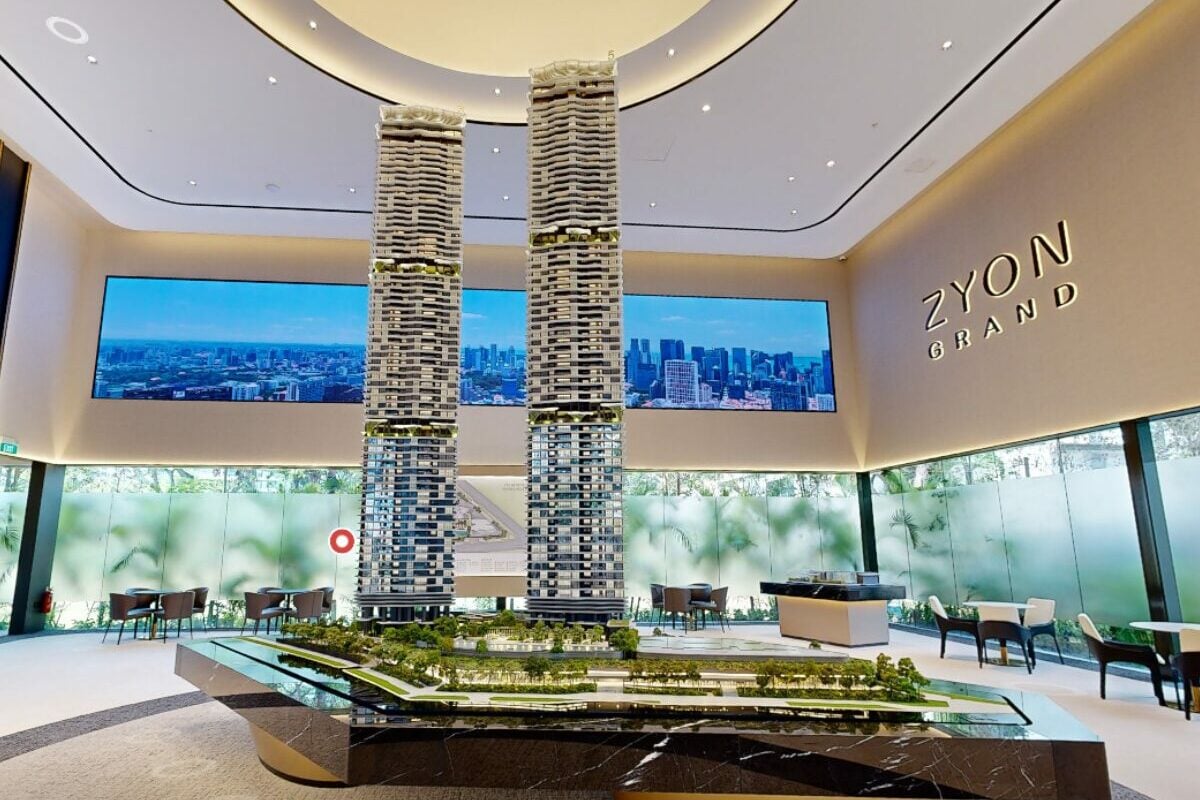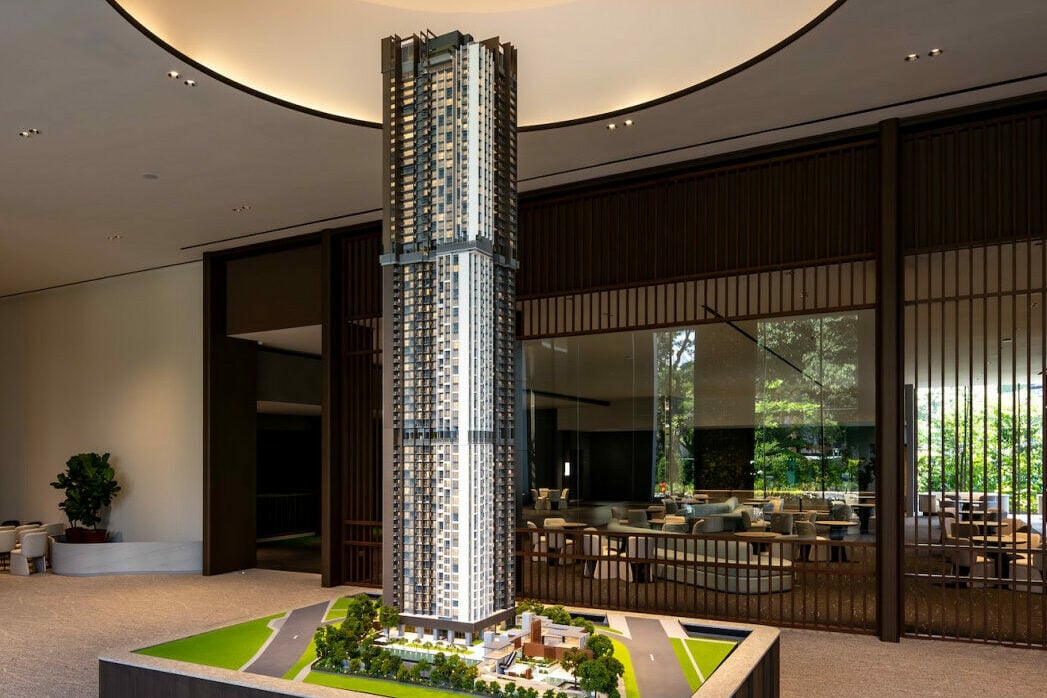In this week’s Open House, hosts Susan Ng and Felicia Tan from 99.co speak with Christine Sun, Chief Researcher and Strategist at Realion (Orange Tee & ETC) Group, about the enduring strength of Singapore’s luxury home segment, where multimillion-dollar transactions remain brisk despite tighter policies. They also catch up with Sandra Li, Senior Marketing Director at ERA Realty Network, who highlights the upcoming launch of Zyon Grand.
Table of contents
- Singapore’s luxury home market: What’s driving demand?
- Renewed interest in luxury homes
- Singaporeans now lead the luxury market
- Luxury home buyer preferences today
- Balancing high risks and high returns
- Project spotlight: Zyon Grand in River Valley
- Unit mix and expected buyer profiles
- Zyon Grand pricing breakdown
- Singapore’s first SA2 project: What investors should know
- Direct comparison to Promenade Peak
Singapore’s luxury home market: What’s driving demand?
While most property segments have cooled under tighter financing and multiple rounds of cooling measures, Singapore’s luxury market seems to have marched to its own rhythm this year. In 2025, private properties in the prime Core Central Region (CCR) are commanding strong prices once again.
Christine Sun defines luxury homes as private properties sold for at least S$5 million, while the ultra-luxury category refers to those priced from S$10 million onwards. “Normally, we use this price quantum as a gauge,” she said, explaining that using per-square-foot (psf) pricing can be distorted because of the growing number of smaller homes being built in prime areas.
She added that most properties crossing the S$5 million mark tend to be around 1,600 square feet (sqft) or larger, while ultra-luxury homes include “penthouses and the good class bungalows.”
Renewed interest in luxury homes

From Q1 to Q3 of 2025, condominium transactions above S$5 million have surged more than 25%, while deals above S$10 million hit a three-year high. The data underscores a luxury market that is moving in the opposite direction of cooling trends in the broader private housing segment.
Christine shared that this renewed interest is closely tied to Singapore’s reputation as a safe haven for global capital. She noted that “the luxury market usually benefits both ways, whether there is a macroeconomic uncertainty or during a boom time.”
She pointed to early 2025, when trade tensions and tariff hikes triggered more activity. “Because of that, we saw that many investors were flocking to Singapore this year,” she explained. The consistency of capital appreciation and the country’s stable environment continue to attract both local and foreign high-net-worth buyers.
The resilience isn’t confined to new launches. The resale luxury condominium segment also recorded a strong performance this year, with transactions climbing from 151 to 194 units year-on-year.
Christine observed that demand for resale luxury homes was quite widespread, across 90 developments. Among the projects that changed hands were Boulevard 88, St Regis Residences, Goodwood Residences, and Hilltops — developments known for their long-standing prestige and freehold tenure. According to her, this shows that investors “feel safe to park their wealth into well-known Singapore luxury properties even if they are not new.”
Singaporeans now lead the luxury market
In a notable shift, Singaporeans now make up the majority of luxury home buyers. “They form, in fact, 60% of the market share for the first three quarters of this year,” Christine said, a rise from 52% in 2024 and significantly higher than the 35% recorded a decade ago.
Meanwhile, the proportion of foreign buyers has dropped sharply — from 51% in 2019 to only 9% this year. This decline reflects the impact of Additional Buyer’s Stamp Duty (ABSD) rates, which have made it more expensive for foreigners to purchase high-end homes. Permanent Residents (PRs) hold a steady share of around 30%.
Foreigners who remain active in the segment tend to come from countries with trade exemptions. “A good majority are actually from the USA,” Christine noted. “Some are Swiss nationals because when they purchase properties here, they are exempted from the ABSD for their first property due to the free trade agreement.”
This change in buyer profiles reflects not only shifting policy but also growing domestic affluence. Christine pointed out that Singapore is now “the fourth wealthiest city in the world, just behind New York, San Francisco, and Tokyo.”
Rather listen to this podcast? Head over here.
Luxury home buyer preferences today
Luxury housing in Singapore is not just for old money anymore. The market is seeing an influx of younger affluent buyers, particularly professionals in the medical, legal, tech, and finance sectors.
“There is a growing number of young affluent buyers who are entering the luxury market now,” Christine explained. These buyers are often choosing smaller units in prime districts — particularly in Districts 1, 2, and 7, close to the Downtown Core — because of more accessible pricing and modern designs.
“They tend to buy the smaller units in the prime segment because they want to jumpstart their investment journey,” she said. Many of these projects appeal to younger buyers with their modern designs compared to the traditional layouts in Orchard or River Valley.
Alongside this new generation of buyers, Christine noted that wealthy families are also continuing to purchase second or third properties for their children, often paying in full. “Some of them, they just pay cash for these properties,” she said.
Good Class Bungalows, or GCBs, remain at the top of the luxury hierarchy. “They are considered the ultimate status symbol in Singapore in terms of housing,” said Christine. With only about 2,800 units in total, supply is rare, making them extremely valuable.
These properties are typically viewed as defensive investment assets. “They do appreciate over time, especially over decades, and they are usually bought to preserve and grow wealth for their next few generations.”
Balancing high risks and high returns
Christine observed that while luxury homes tend to deliver stronger profits than city-fringe or mass-market properties, they also come with more volatility. “Usually, the luxury segment tends to yield higher profits … but having said that, in terms of money-losing deals, it’s also higher in the luxury segment.”
Explore these loss and gain stories in 99.co’s Condo Cash or Crash.
Cooling measures have not been without impact, though their effect is muted at the top end. “I would not say that the cooling measures are less effective,” Christine clarified. “Although we are seeing more luxury home sales, the numbers are still small.” The mass market remains the dominant part of Singapore’s housing landscape.
Looking ahead, she believes the key factors for 2026 and beyond will include macroeconomic conditions, domestic wealth growth, and new supply. “If supply is going to remain tight, then we believe that prices may continue to hold or even grow in the long term,” despite possible seasonal downturns.
Project spotlight: Zyon Grand in River Valley

Zyon Grand, located on Zion Road, is a 99-year leasehold integrated project comprising 706 residential units spread across two towers rising up to 62 storeys. Developed by City Developments and Mitsui Fudosan, the project combines private homes, retail, and even long-stay serviced apartments — the first of its kind in Singapore.
At ground level, Zyon Grand will feature Zyon Galleria, a retail podium designed as a “lively community” with cafés, dining spots, shops, a full-sized supermarket, and an early childhood centre. The project will also enjoy direct access to Havelock MRT station, making it one of the most connected new launches in central Singapore.
The project preview began on 8 October 2025, with sales bookings scheduled to start on Saturday, 25 October 2025.
Unit mix and expected buyer profiles
In terms of unit distribution, about 83% of its units consist of the ever-popular 1-, 2-, and 3-bedroom layouts. The remaining 17% are larger family homes, including 4-bedders, 5-bedders, and two exclusive penthouses. Notably, all of these larger homes come with private lift access.
According to Sandra Li of ERA Realty Network, Zyon Grand’s unit mix is designed to appeal to both investors and owner-occupiers. About 41% of its total units consist of 1- and 2-bedroom layouts, which serve as an accessible entry point into an integrated development within the city fringe.
These smaller configurations are compact and efficient, appealing to investors and first-time buyers seeking rental potential and capital appreciation, as well as professionals and expatriates who work in or near the city centre.
The 3-bedroom units are tailored for HDB upgraders and families who want practical floor plans with ample living space and good value, offering a comfortable transition into private housing without stretching affordability.
Larger families will find the 4- and 5-bedroom units particularly attractive. The developer has placed clear emphasis on these spacious configurations, ensuring they match the generous proportions typical of prime developments nearby. A unique highlight is that 4-bedroom units begin from level two — something rare in River Valley, where big units are often located on higher floors.
Zyon Grand pricing breakdown
Zyon Grand enters a competitive River Valley market, with around 3,000 new units launching within a short span. Sandra described its pricing as “well-calibrated,” giving it an edge among nearby projects.
According to Sandra, the development is projected to launch at around S$2,750 psf, positioning it slightly higher than some nearby mass-market options but below the pricing at River Green. This entry point remains attractive given its direct MRT link and comprehensive mixed-use amenities.
For families, Zyon Grand’s larger units are designed with price accessibility in mind. With starting prices of about S$3.9 million for the 4-bedders, these units are roughly half a million dollars less than comparable 4-bedders at neighbouring developments such as Promenade Peak, where similar-sized units begin around S$4.4 million.
Altogether, the project’s pricing aims to balance central convenience with attainable entry points. This formula could appeal to both investors and upgraders seeking a foothold in one of Singapore’s most in-demand districts.
Singapore’s first SA2 project: What investors should know
Unlike traditional serviced apartments, long-stay serviced apartments (SA2) units require a minimum three-month lease. The dedicated 36-storey SA2 tower is fully managed by the developer under single ownership, meaning units cannot be sold individually.
Sandra explained that this setup allows the tower to function almost like a hotel — professionally operated, with its own private facilities separate from the condominium. “The idea is to blend residential living with long-stay accommodation in one integrated environment,” she said.
For investors, this arrangement could be advantageous. “Imagine someone relocating from Tokyo or London who stays here for a few months. They experience the River Valley lifestyle, the convenience of the MRT right below… and later, they may look to buy or rent nearby,” Sandra noted. “It creates a natural tenant funnel.”
Direct comparison to Promenade Peak
Although located right next to each other, “Zyon Grand and Promenade Peak have been designed with very different audiences in mind”, she explained. Promenade Peak positions itself as a premium, upper-market development that caters to lifestyle-driven buyers who prioritise space, prestige, and comfort.

Its units are generally larger and more luxurious, which naturally translates into a higher overall price quantum. The layouts are also more distinctive, sometimes even “unconventional” in smaller formats, reflecting its focus on individuality and high-end appeal.
Zyon Grand, on the other hand, targets a more investment-conscious demographic. Its compact, efficient layouts maximise functionality, offering buyers a practical and affordable way to own property in River Valley. The design philosophy is simple, ideal for investors or residents who value usability over excess space.
Another key difference lies in the use mix. Promenade Peak is a fully residential development, offering a quieter, private environment suited for owner-occupiers. Zyon Grand, by contrast, blends residential living with commercial and serviced apartment components, bringing convenience, energy and variety through its retail podium and SA2 tower. While this mix introduces more foot traffic, it also creates a vibrant community atmosphere and stronger rental potential.
In essence, Promenade Peak appeals to lifestyle seekers chasing space and prestige, while Zyon Grand is crafted for buyers who prioritise accessibility, value, and long-term investment appeal. Together, they reflect the growing diversity of choices in River Valley — one of Singapore’s most competitive and dynamic launch zones.
The post [Open House] Inside Singapore’s soaring luxury home market – Plus, a look at the upcoming Zyon Grand launch appeared first on .

